August 2, 2016
Road’s End Wildlife Sanctuary, Worthington, and Lynes Wildlife Sanctuary, Westhampton
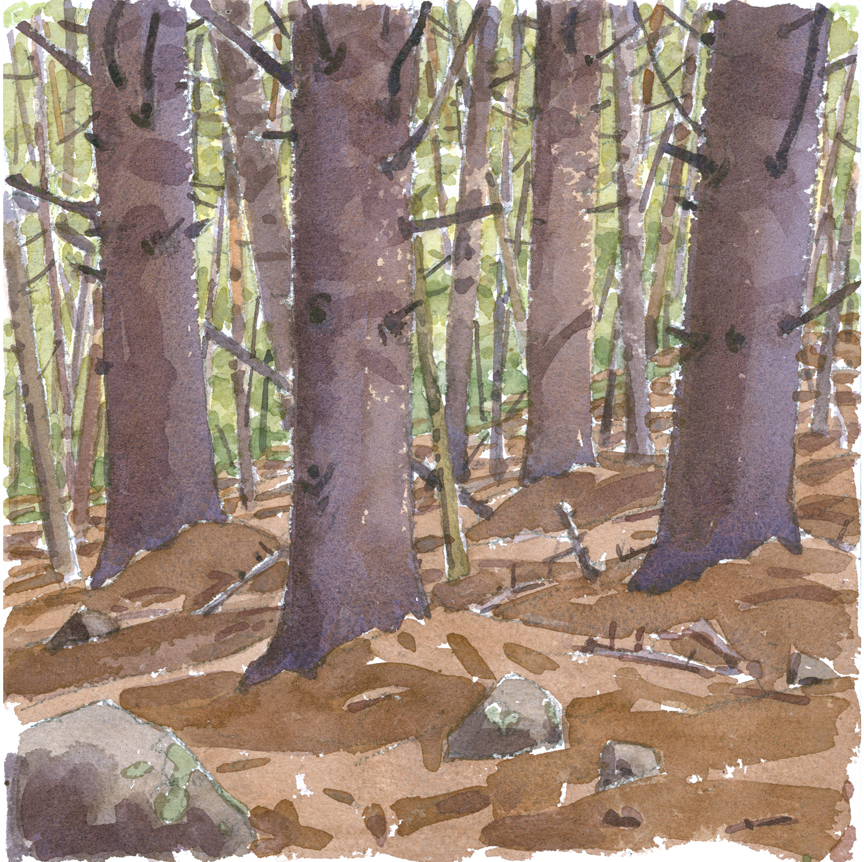
I’ve combined these two sanctuaries into one blog post because they have so much in common. Both are in the foothills east of the Berkshires, both are just under 200 acres in size, with one mile of trail each, both are abandoned farmsteads, and both were visited on the same day by yours truly!
Road’s End Wildlife Sanctuary is aptly named. Turning off Rte. 143 onto the lightly traveled Williamsburg Road, I then turn onto a dirt road (Corbett Road), which eventually narrows down into a grassy cart path before ending abruptly at a small turnaround. Road’s End Indeed!
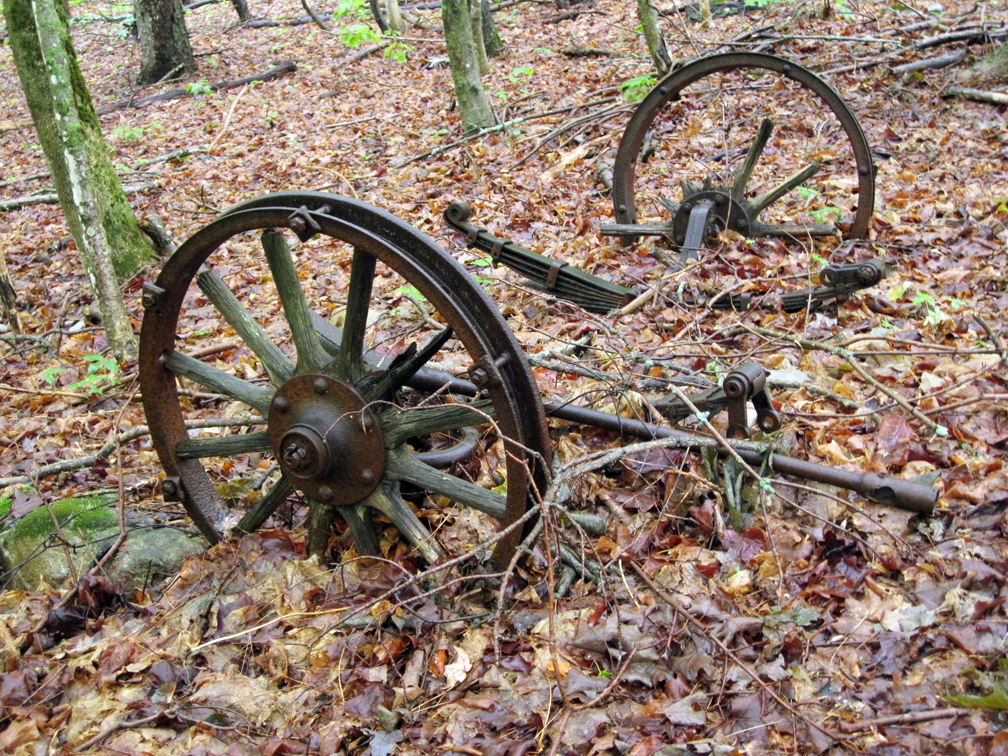
Reminders of the sanctuary’s agricultural heritage can be seen along old Corbett Road. Stone walls, ancient sugar maples, an old dump, and fragments of rusting farm machinery are scattered along the old roadbed. By 1750, approximately 80% of the forests in this area had already been cleared for lumber and firewood, and the land given over to agriculture. But as early as the 1820s, farmers were leaving the area in search of more productive soils – a trend that continues more or less to the present day.
A beaver pond west of the road is not visible through the trees, so I wander down an old track that leads in that direction. I find no open views of the beaver pond, but discover a lovely spot where Steven Brook flows into the pond. Sparkling, clear water bubbles over a bright gravel streambed, while the flute-like song of a wood thrush drifts up from deep in the forest.
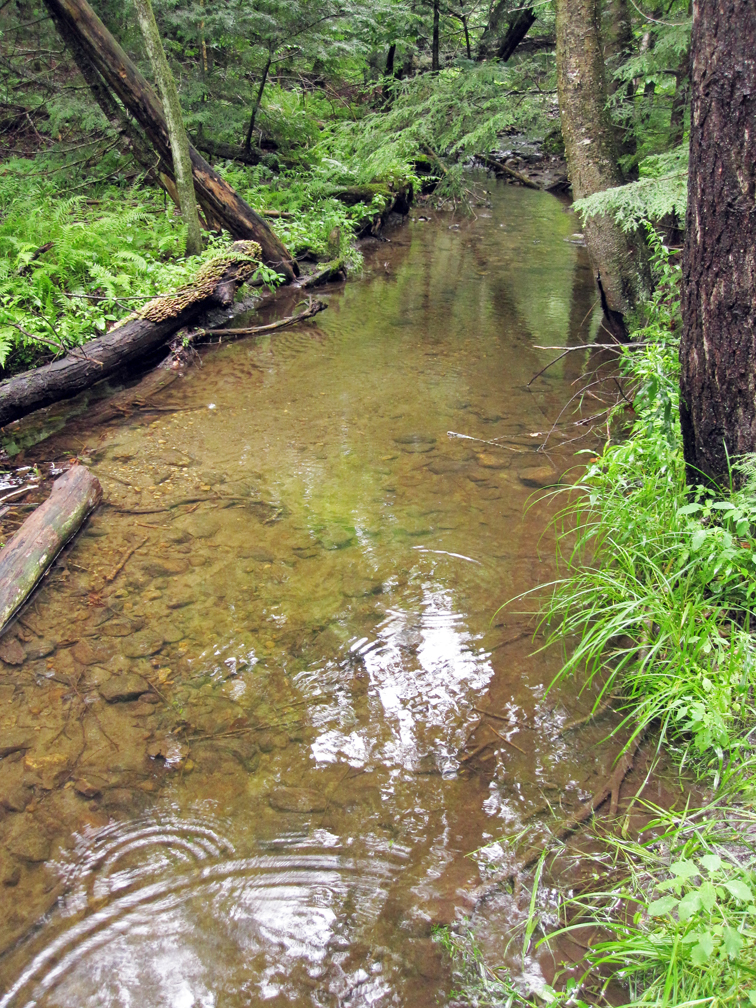
The Brookside Trail passes through an “old field white pine forest”. Recent rains have soaked the ground, and robust clumps of Indian Pipes are poking up through the pine needles all over this area. The ghostly white flower stalks look like skeletal fingers (another name for this flower is “corpse plant”). Perhaps the farmers of old are rising up to take a look around!
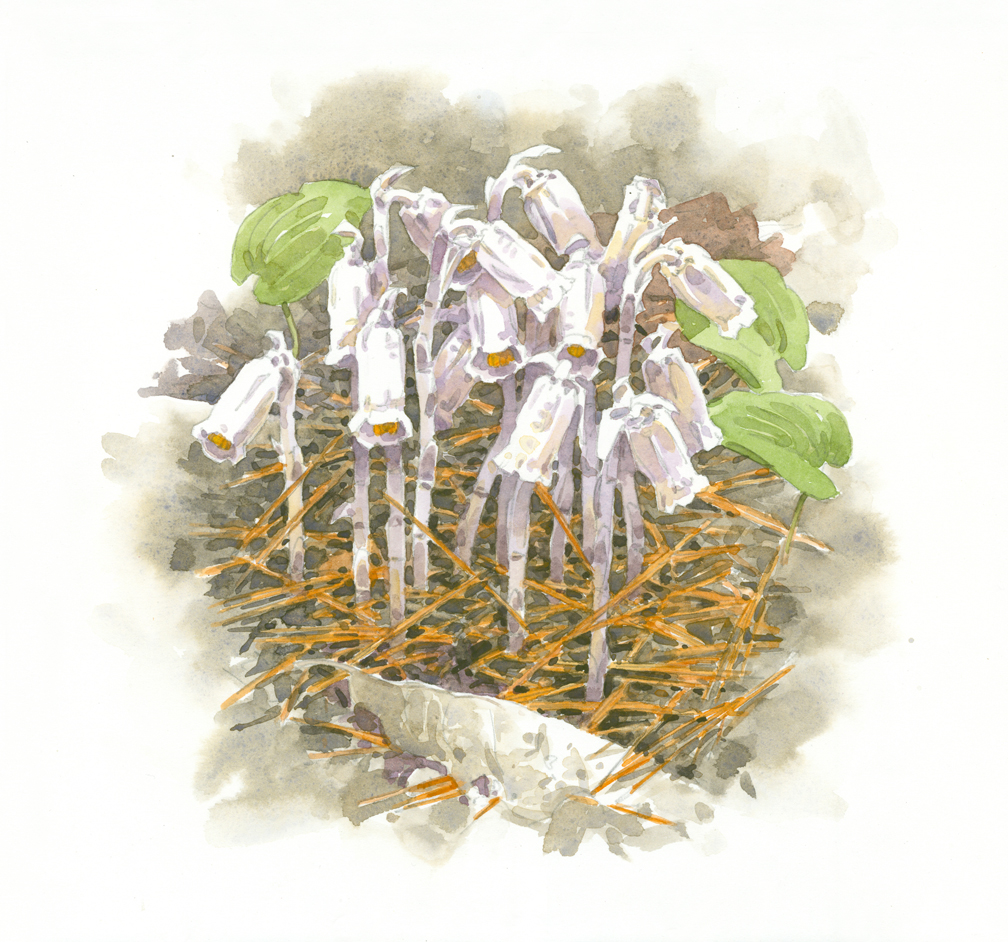
Indian Pipes at Roads End, watercolor on Arches hot-press, 10.25″ x 12″
Lynes Wildlife Sanctuary was also a farmstead years ago, and featured a farm pond and orchards. The farm pond is still there. The lilies growing along the bank form exotic, tropical-looking patterns, which I pause to photograph.
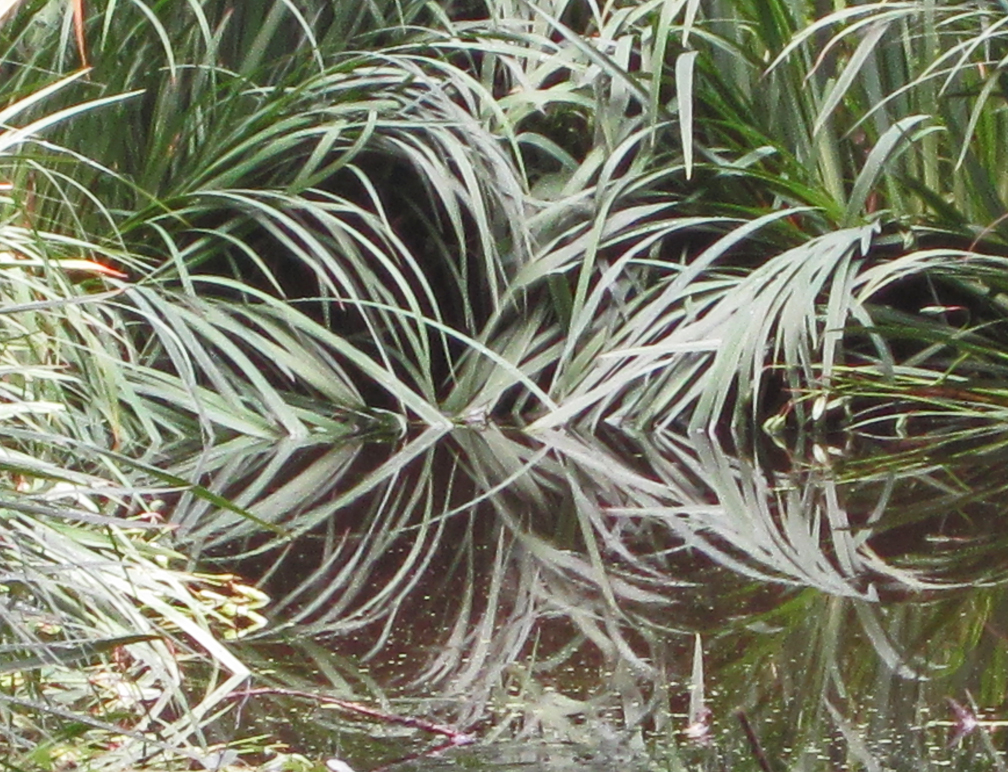
The fruit trees and orchards are gone, but several old fields, which are mowed annually, remain. These fields are warm, sun-filled pockets in the forest, buzzing with dragonflies and butterflies.
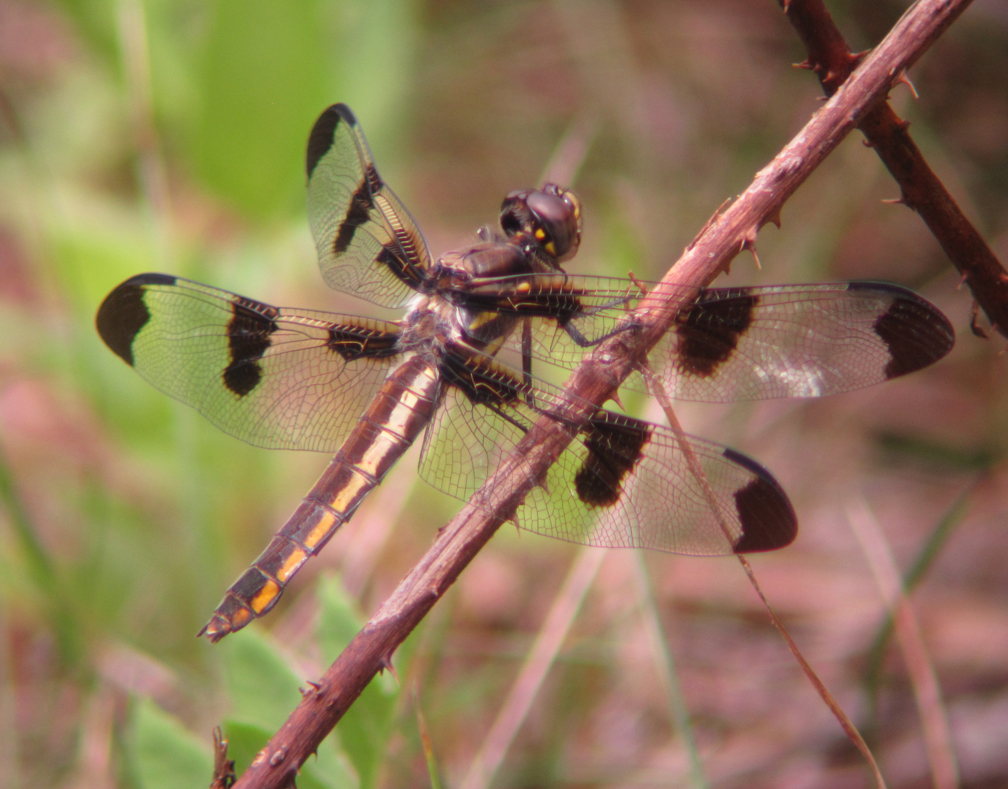
Twelve-spotted Skimmer
At the edge of the field are witch-hazel shrubs loaded down with ripening fruits. The flowers won’t appear until October, at about the same time the fruits burst open and expel the seeds. The genus name Hamamelis refers to the simultaneity of these two events.
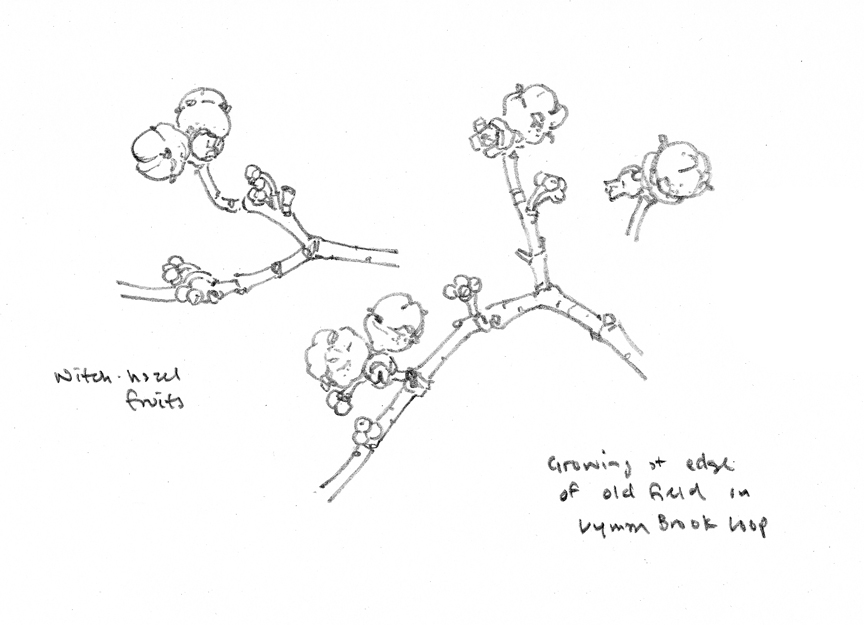
Sketchbook studies of Witch-hazel Fruits, pencil, 5″ x 8″
On the Lyman Brook Loop Trail, I paint a small watercolor of the handsome white pine forest that straddles the steep bank above the brook.

Pine Forest at Lynes Woods, watercolor on Arches rough, 9″ x 9″
It’s mid-afternoon and quiet as I make my way further along Lyman Brook on the eastern edge of the property, but more than once, I disturb small frogs that squeak and leap out from under my feet. These are young northern green frogs (Lithobates clamitans melanota). These aquatic frogs are the ones you’re most likely to see around small streams and brooks in summer. Despite their name, they can be brownish or coppery in color, but they usually show at least one bright patch of green on the upper lip.
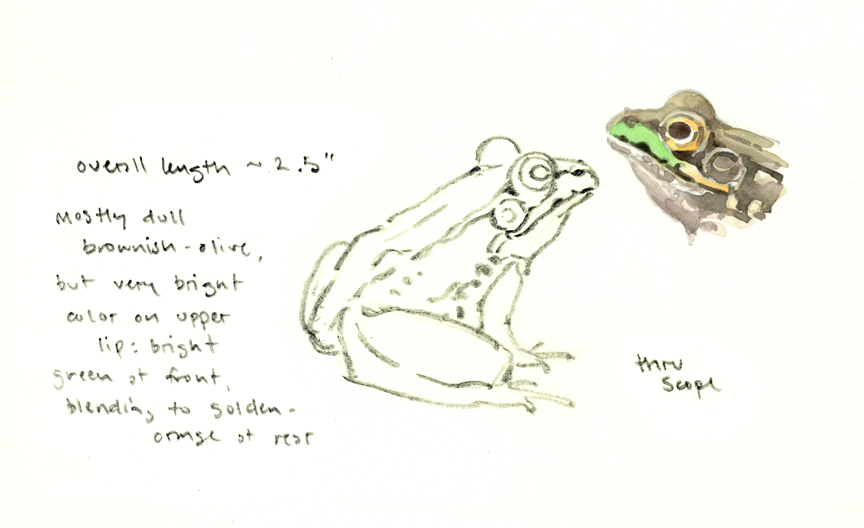
Green Frog sketchbook study, pencil and watercolor, 4.5″ x 7″
One of the frogs sits motionless on a gravel bar after I frighten it from its perch in the streamside vegetation. I focus my telescope on it and make some drawings, taking special care to record the intricate pattern of spots and stripes on the face and throat, and that startling bright green on the upper lip. I learned from my books that this individual is a female – with an eardrum smaller than the eye, and a whitish (not yellowish) throat.
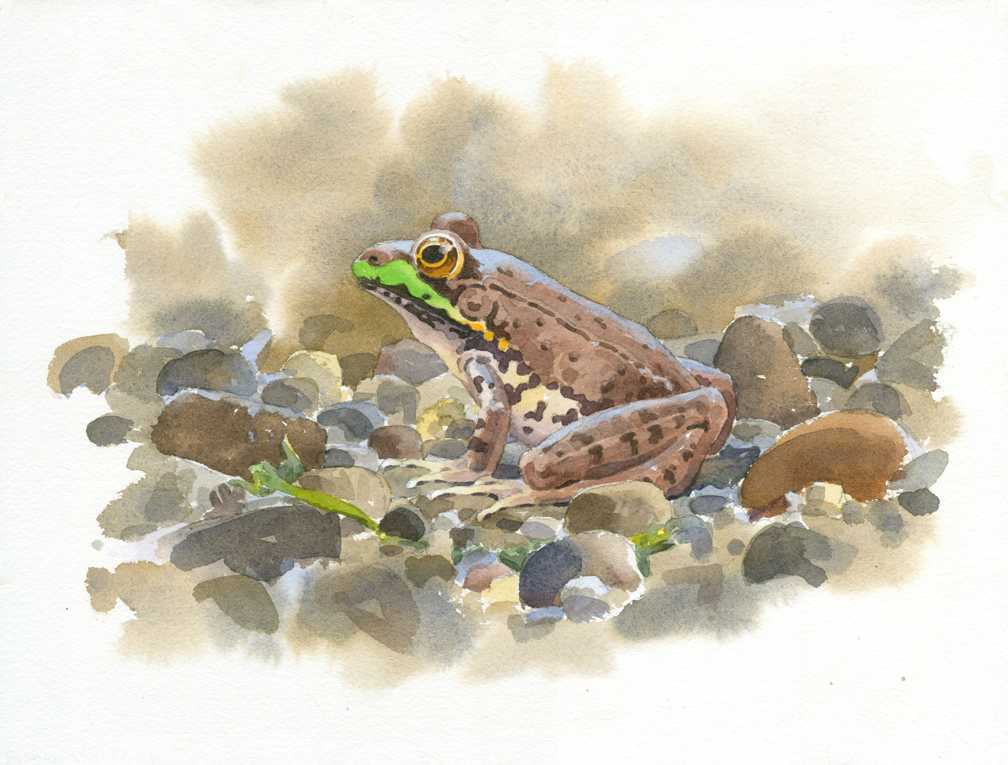
Green Frog at Lynes Woods, watercolor on Arches cold-press, 9″ x 12″
While working on this watercolor later in my studio, I remembered (with pangs of guilt) how as kids we would gather frogs like this into buckets and sell them to a local bait shop!

